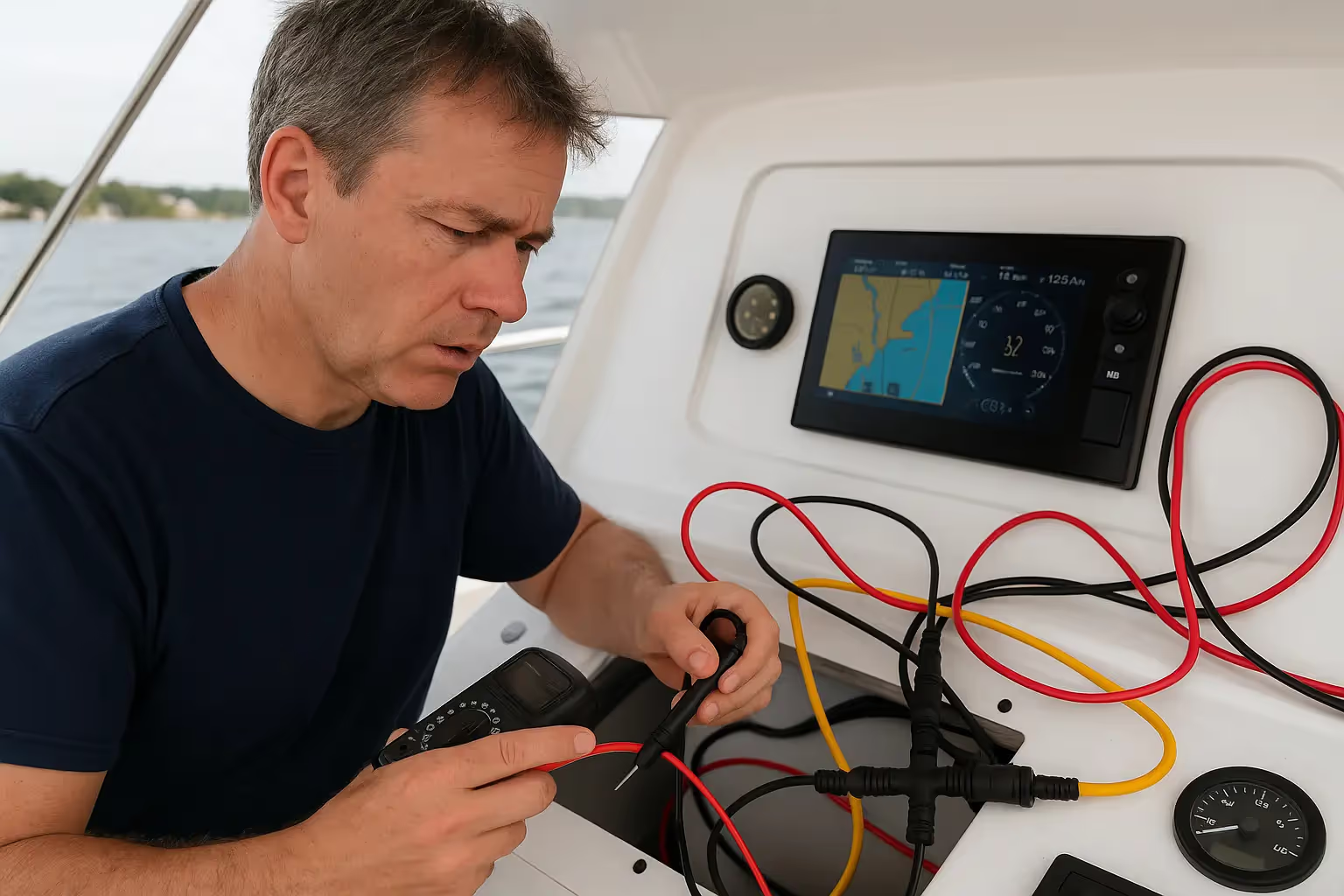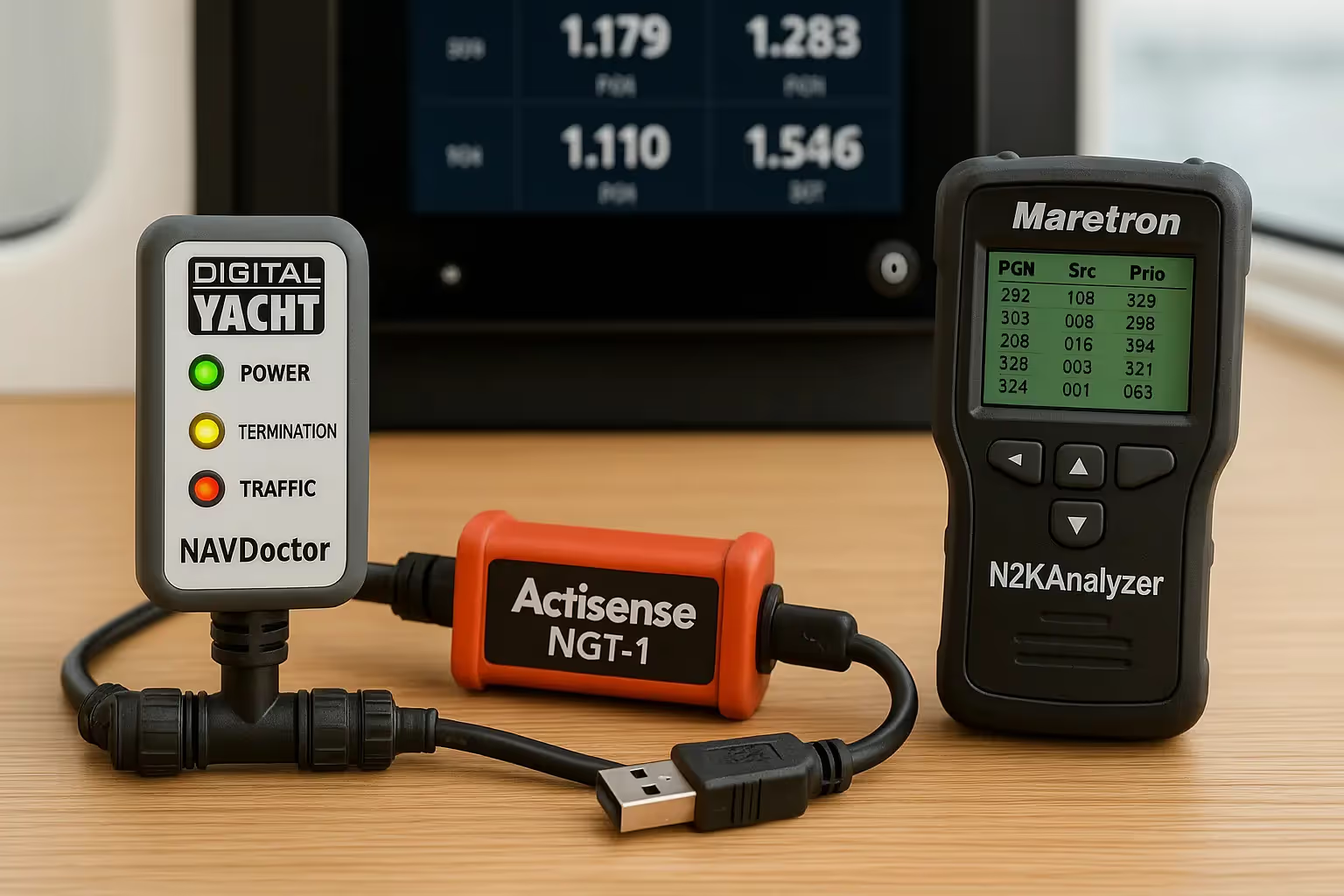Gear Up for the Voyage: A Novice’s Guide to Essential Tools for RYA Courses

Section 1: Charting Your Course - What to Bring Along
When starting an RYA course, preparation is as crucial as the lessons themselves. While the thrill of sailing captures the heart, it's the equipment you bring along that ensures safety, comfort, and efficiency during your maritime journey. Here's a definitive list of the essentials every novice sailor should pack.
1. Clothing Suited to the Elements:
The water is a theater of the ever-shifting moods of nature. Equip yourself with:
- Sailing Jacket: No matter the season, a weather-resistant jacket is indispensable. It shields you from unpredictable splashes and gusty winds, ensuring you remain focused on your sailing tasks. However, In Mallorca, a lightweight inshore jacket is normally just fine.
- Shorts/Waterproof Trousers: Shorts provide you with greater mobility in cooler regions. But as the weather gets colder, waterproof pants are essential for warmth and defense against the sea's icy embrace.
2. Footwear for Firm Footing:
The dance of sailing demands agility and balance.
- Deck Shoes/Sailing Boots: Deck shoes are appropriate in warmer weather, but in the cold, sailing boots are a must. They ensure that every step on the deck is secure and safe by offering the necessary traction on damp surfaces.
3. Protection Against the Sun:
The open sea offers little shade, meaning that sun protection is crucial.
- Hats and Sunglasses: Strong caps provide UV protection, while polarized sunglasses (ideally fastened with a string) reduce glare for improved vision.
4. Comfort Enhancers:
Small additions, big impacts.
- Lip Salve and Eyedrops: The sea air, although invigorating, can be very dry. These help counteract the effects of salt and wind, ensuring that you will be more comfortable.
- Gloves: Whether fingerless or full-fingered, gloves offer protection from rope burns and blisters, especially during rigorous tasks like hauling lines. Gloves are generally optional, but they become essential in deep winter, and for beginners, especially when starting out as their hands are unaccustomed to the harsh conditions.
Setting out for an RYA course is more than a pursuit of knowledge—it's a commitment to the holistic sailing experience. Although the school offers safety and navigational aids, personal equipment makes the trip more enjoyable and guarantees comfort and safety for every lesson on the waves.
Section 2: Setting Sail with Support - What the School Provides
Beginning an RYA course is more than just stepping into the world of sailing—it's joining a legacy of maritime excellence. Although self-preparation is essential, the sailing school is a vital resource for creating a secure and all-encompassing learning environment. Here's a peek at the extensive help the school offers.
1. Safety as the Prime Directive:
The vastness of the sea is as unpredictable as it is mesmerizing, necessitating stringent safety measures.
- PFD (Personal Flotation Device): This is every sailor’s lifeline. Although seasoned participants may bring their own, the school guarantees a correctly fitted, approved PFD for every sailor, emphasizing the non-negotiable priority of safety.
2. Tools for Mastery:
Sailing is as much about understanding the sea as it is about navigating it.
- Navigation Tools and Charts: The open sea is very large, and its size necessitates accuracy especially close to shore. Every sailor leaves the program with a set of critical navigation instruments and comprehensive maps tailored to their particular itinerary. These are not just tools; they are catalysts that convert academic understanding into useful navigational abilities.
3. The Vessel—Your Floating Classroom:
A sailor's relationship with their vessel is foundational to their maritime journey.
- Fully Approved Vessel: When you step aboard a school vessel, you can be sure that it meets rigorous safety and maintenance standards. Each ship is a beacon of reliability, maintained meticulously for optimal performance. Beyond the ship's structure, all vessels are equipped with essential safety equipment, from emergency radios to lifebuoys, further emphasizing the school's commitment to safety.
The RYA course combines institutional assistance with individual passion. The sailing school makes sure that newcomers are supported by the best gear, knowledgeable instruction, and an unshakable dedication to their safety as they embrace the sea.
Section 3: Sailing into Knowledge - Understanding the Importance of Proper Gear
Venturing into the world of sailing is not merely about mastering techniques—it's about forging a bond with the sea. This bond, while based on respect and passion, is also deeply rooted in being prepared. Understanding the significance of the right gear is a vital part of this maritime journey.
1. Enhancing Performance:
Proper gear isn't just about comfort; it's about maximizing your potential as a sailor.
- Tactile Precision: Think about the gloves that shield hands from burns caused by friction. Whether they are fingerless or have fingers, these gloves have purposes beyond simple protection. They help sailors tie knots and haul lines more effectively by enabling them to feel and manipulate ropes with tactile precision.
2. Safety First:
The sea, in all its vastness, can be unpredictable. Gear is the first line of defense.
- Stable Footing: Proper footwear, like deck shoes or sailing boots, ensures better grip on wet and slippery decks, preventing mishaps.
- Clear Vision: Polarised sunglasses, apart from protecting eyes from UV rays, reduce glare, ensuring clear vision—a must when gauging distances or reading water conditions.
3. Combatting Nature's Challenges:
While the sea's beauty is intoxicating, it also poses unique challenges.
- Protection from Elements: A sailing jacket or waterproof trousers shield you against sudden splashes or downpours, ensuring that sailors can focus on tasks while being comfortable.
- Guarding Against Dehydration: Lip salve and eyedrops might seem insignificant but they play a crucial role in battling the drying effects of sea winds.
In conclusion, gearing up for sailing isn't just about having a checklist of items. It's about equipping oneself for a symphony where knowledge, skill, and preparedness come together. The appropriate equipment enhances the sailing experience by guaranteeing that a person is safe, comfortable, and prepared for any obstacle when they venture out into the vast sea.
Conclusion:
Setting sail on an RYA course is an enriching journey, uniting both the heart and mind with the rhythms of the sea. While the waves teach adaptability and the winds test resolve, it cannot be overstated how important it is to be well-equipped. The combination of personal gear and the robust support from the sailing school ensures a holistic learning experience. As beginners venture into the vastness of maritime knowledge, their gear stands as a testament to preparation, safety, and commitment. Remember, in the world of sailing, the right equipment doesn't just facilitate learning—it amplifies the excitement of every nautical mile traversed.
FAQs
Can I bring my own PFD to the RYA course?
Absolutely! While the school provides a correctly fitted PFD, you’re welcome to bring your own, as long as it is approved and adheres to RYA standards.
What type of footwear is recommended for winter sailing?
During winter, it is advisable to wear sailing boots or deck shoes as they offer a good grip on wet surfaces and provide insulation against the cold.
Are gloves necessary even for short sailing trips during the course?
Yes, gloves, whether with or without fingers, assist in providing a better grip when handling lines and sheets and protect your hands from friction, making them a great option for all trips, no matter the weather.
How crucial is it to have polarised sunglasses during the course?
Polarised sunglasses are highly recommended as they reduce glare from the water, enhancing visibility and reducing strain on your eyes during sunny days.
Will I be taught how to use the navigation tools and charts provided?
Yes, RYA courses incorporate comprehensive lessons on using navigation tools and understanding charts, making sure that you are well-equipped to effectively chart your course. However, for day skippers, it is important to have completed the theory course or equivalent so that you are fully prepared.
















